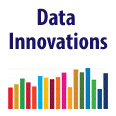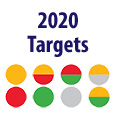Ensure inclusive and equitable quality education and promote lifelong learning opportunities for all

Despite progress, the world is not on track to meet 2030 education targets. Before the coronavirus crisis, projections showed that more than 200 million children would be out of school, and only 60 per cent of young people would be completing upper secondary education in 2030. Education systems worldwide have been hit hard and abruptly by the pandemic. School closures to stop the spread of COVID-19 have affected the vast majority of the world’s student population. Disrupted education is adversely affecting learning outcomes and social and behavioural development of children and youth. Children and youth in vulnerable and disadvantaged communities are particularly at risk of educational exclusion. The pandemic is deepening the education crisis and widening existing educational inequalities.
School closures worldwide may reverse years of progress in access to education
Before the coronavirus crisis, the proportion of children and youth out of primary and secondary school had declined from 26 per cent in 2000 to 19 per cent in 2010 and 17 per cent in 2018. Despite some progress, 258 million children and youth were still out of school in 2018, of which three quarters lived in sub-Saharan Africa and Southern Asia. Girls face more barriers than boys at the primary level. Globally, around 5.5 million more girls than boys of primary school age were out of school in 2018. The disadvantage girls face is more prominent in sub-Saharan Africa, where there were 128 girls for every 100 boys out of primary school that year.
In 2020, as COVID-19 spreads across the globe, more than 190 countries have implemented nationwide school closures. About 90 per cent of all students (1.57 billion) were out of school. Although distance learning solutions are provided in four out of five countries with school closures, at least 500 million children and youth are currently excluded from these options. The sheer magnitude of school closures is likely to set back progress on access to education.
Proportion of children and youth out of primary, lower and upper secondary school, 2000–2018 (percentage)
Without remedial action, the effects of COVID-19 will only add to the obstacles faced by poor children in completing their education
Goal 4 aims to keep children in school and ensure they complete their education. The global primary school completion rate was estimated at 85 per cent in 2019, up from 70 per cent in 2000. The lower and upper secondary school rates were 73 per cent and 49 per cent, respectively, with large disparities among population groups. For example, in low-income countries, the primary completion rate is 34 per cent for children from the poorest 20 per cent of households and 79 per cent for children from the richest 20 per cent of households. Similar disparities were found in completion rates for lower secondary and upper secondary schools.
Months of absence from school owing to COVID-19 are likely to impact education outcomes. In the longer term, prolonged absence from school is associated with lower retention and graduation rates and worse learning outcomes, in particular among segments of the population that are already disadvantaged, including members of poor households and students with disabilities.
Primary school completion rate, 2014–2018 (percentage)
Remote learning remains out of reach for most students in the poorest countries
During the COVID-19 pandemic, many schools are offering remote learning to students through virtual classrooms to mitigate the impact of school closures. While this is an option for some, it is out of reach for many. Lack of access to computers and the Internet at home, as well as a low level of computer-related skills, put many already marginalized students at a further disadvantage.
In 2019, around 87 per cent of households in Europe had Internet access at home, compared with 18 per cent of those in Africa. The digital divide is also reflected in computer ownership: 78 per cent of European households owned a computer in 2019 compared with 11 per cent in Africa.
Successful remote learning also depends on the computer skills of teachers and parents. In about half of the 86 countries for which data are available, less than half of the population possessed basic computer skills, such as copying an electronic file. For more complex skills, such as downloading and installing new software and writing a specialized computer program, the rates were even lower.
Proportion of the population with various levels of computer skills, 2014—2018 (percentage)
School closures create added risks for the health and safety of vulnerable children
For millions of children around the world, school is not only a place to learn. It is also a safe place, removed from violence, where they can receive free meals, and health and nutrition services such as vaccinations, deworming and iron supplementation. An estimated 379 million children missed out on school meals because of school closures during the pandemic. Without them, many children go hungry, which also threatens their immune systems and their capacity to cope with disease.
As studies from previous crises show, school closures and the economic downturn caused by COVID-19 may also increase rates of violence against children, child labour, child marriage and early pregnancies. Children from poor families often work to compensate for lost family income. Moreover, the reduced productivity of working parents poses economic challenges to both the family and society.
The cost of fighting COVID-19 and the reduction in tax revenue caused by the economic downturn are likely to have a negative effect on education spending by governments and on global aid to education.
Lack of basic infrastructure in schools, such as handwashing facilities, will make recovery from COVID-19 more difficult
Lack of basic handwashing facilities in many schools around the world means that teachers and students do not enjoy a safe learning environment. In areas where schools are closed because of the pandemic, it also means that they will be unable to practice essential hygiene measures when they go back to school. According to the latest available data, only 65 per cent of primary schools worldwide have basic handwashing facilities. The proportion is slightly higher for lower secondary and upper secondary schools, at 71 per cent and 76 per cent, respectively. Of all regions, sub-Saharan Africa faces the biggest challenges, with basic handwashing facilities in only 38 per cent of primary schools and 43 per cent of upper secondary schools.
Many schools also lack other basic resources, such as electricity, clean drinking water, computers and Internet access. Globally, 89 per cent of upper secondary schools have access to electricity, 85 per cent to basic drinking water, 74 per cent to computers and 61 per cent to the Internet. Those in sub-Saharan Africa are the most disadvantaged: only 57 per cent of upper secondary schools have access to electricity, 55 per cent to drinking water, 41 per cent to computers and 24 per cent to the Internet.
One important step towards the goal of quality education for all is getting enough trained teachers into classrooms. According to the latest available data, 85 per cent of primary school teachers and 86 per cent of secondary school teachers worldwide received the minimum required training. Sub-Saharan Africa has the lowest percentage of trained teachers: 64 per cent at the primary level and 50 per cent at the secondary level.

